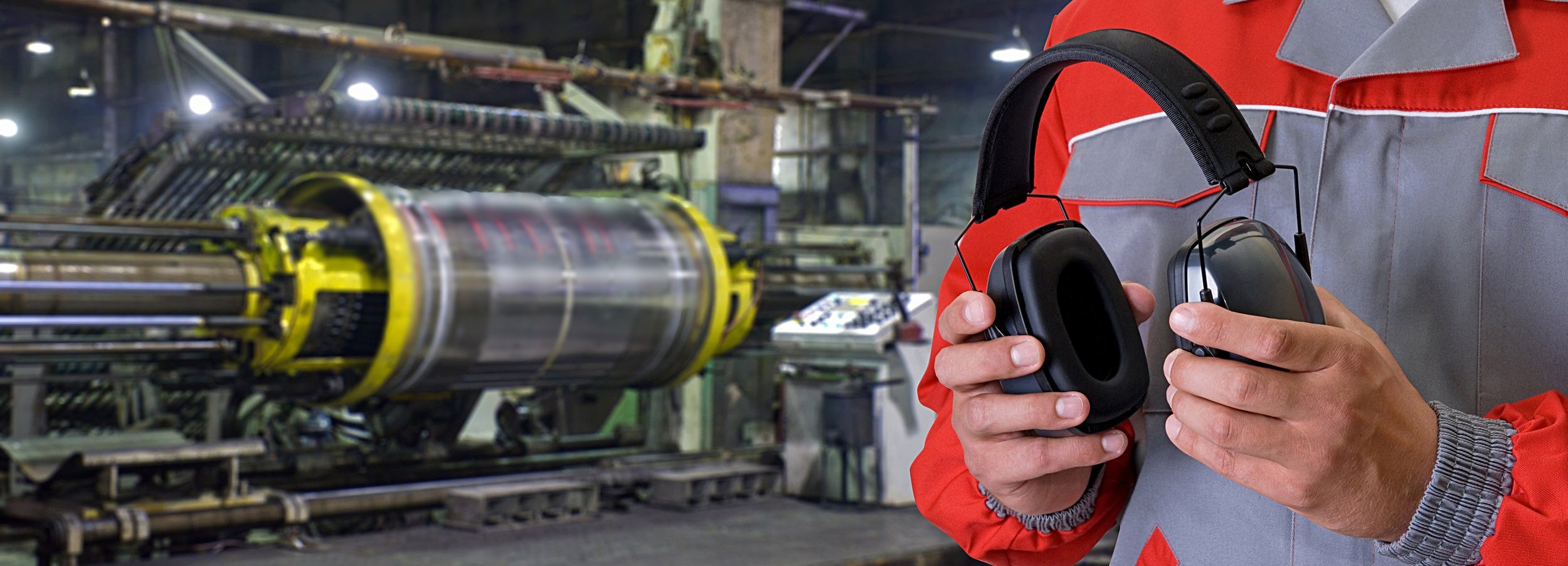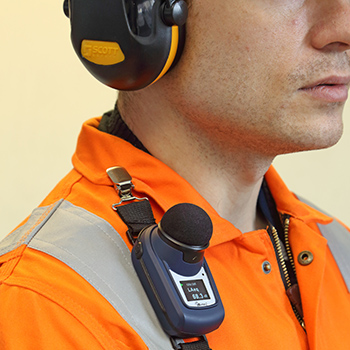
Protect Employee Hearing, Protect Your Business.
Take the first step toward OSHA-compliant noise monitoring and ensure a safer workplace for your employees.
Why Choose Noise Survey Solutions?
Protect your employees
Ensure their hearing is safeguarded from hazardous noise exposure.
Optimize your program
Tailor your hearing conservation plan for maximum effectiveness.
Protect your business
Minimize liability and avoid costly claims related to workplace hearing loss.
Meet OSHA standards
Establish compliance with federal noise regulations (OSHA 29 CFR 1910.95).
Your partner in noise monitoring
OSHA-compliant hearing conservation programs begin with a noise survey.
Our process exceeds federal noise monitoring regulations, ensuring an accurate and comprehensive depiction of hazardous noise sources throughout your facility.
Our report will allow you to understand your legal requirements, and optimize your hearing conservation program based on the findings.
The Process
-

1. Request a Quote
Let us know about your facility and needs—we’ll provide a custom quote for your noise survey.
-

2. Schedule an On-Site Survey
Our expert audiologist will conduct a thorough assessment of noise levels throughout your workplace.
-

3. Receive Your Report
Get a detailed, easy-to-interpret report with actionable recommendations for OSHA compliance and best practices.
About us
Noise Survey Solutions strives to protect employee hearing against hazardous workplace noise, thereby protecting our clients' liability against work-noise-induced hearing loss claims and reducing their number of recordable work injuries.
All on-site surveys are conducted by Dr. Luke Grossi, a licensed and board-certified doctor of audiology. He is certified by the American Speech-Language-Hearing Association and is a licensed course director for the Council of Accreditation in Occupational Hearing Conservation.
FAQs
-
According to OSHA regulation 29 CFR Section 1910.95(d)(3) on hearing conservation:
Monitoring shall be repeated whenever a change in production, process, equipment or controls increases noise exposures to the extent that: additional employees may be exposed at or above the action level; or the attenuation provided by hearing protectors being used by employees may be rendered inadequate…
Although OSHA does not set a specific time limit for repeat monitoring, the NIOSH Criteria for a Recommended Standard states that "if any worker’s 8-hr TWA exposure to noise equals or exceeds 85 dBA, monitoring shall be repeated at least every 2 years."
-
There are two primary types of instruments used in a noise exposure assessment: the sound level meter and personal noise dosimeter.
A sound level meter is a handheld device used to take targeted area and process measurements. The readings will reveal how intense noise is in a particular area, and is a useful tool for identifying operational noise levels from specific machines, tools, processes and equipment. This instrument is often used for noise mapping due to its ability to measure noise in a highly targeted manner.
Noise Survey Solutions utilizes a Casella CEL-620 type 1 sound level meter with octave-band analysis capability for all of our surveys.
A noise dosimeter is a small sound level meter worn by an employee to measure cumulative noise exposure over the course of a workday. A dosimeter records noise levels throughout the day and will calculate a “time-weighted average” (TWA) exposure. Personal noise dosimetry is the most accurate and appropriate tool for measuring noise exposure of mobile employees with various tasks and work areas.
Noise Survey Solutions utilizes Casella dBadge2 wireless personal noise dosimeters, which record and calculate personal TWA exposure with respect to the Action Level and PEL.
-
The 29 CFR 1910.95 OSHA standard establishes an action level (AL) of 85 A-weighted decibels (dBA) as an 8-hour time-weighted average (8-hr TWA).
For exposure purposes, OSHA requires integration of all continuous, intermittent, and impulse sound levels from 80 to 130 decibels into the TWA noise measurement to determine if exposures are at or above the Action Level.
Employees exposed at or above the Action Level must be included in a hearing conservation program.
-
The 29 CFR 1910.95 OSHA standard establishes an Permissible Exposure Limit (PEL) of 90 A-weighted decibels (dBA) as an 8-hour time-weighted average (8-hr TWA). Exposure to impulsive or impact noise should not exceed 140 dB peak sound pressure level.
For exposure purposes, OSHA requires integration of all continuous, intermittent, and impulse sound levels from 90 to 140 decibels into the TWA noise measurement to determine if exposures are at or above the Permissible Exposure Limit.
Where employee exposures exceed the Permissible Exposure Limit, employers must implement feasible engineering and/or administrative controls, where practical, in order to reduce employee noise exposure below the PEL. Employees must wear hearing protection until controls are proven effective.
-
Noise-induced hearing loss (NIHL) is essentially a factor of two exposure variables: intensity and duration.
As such, current OSHA policy requires the action level to be reduced for exposure to noise during shifts longer than 8 hours. For work shifts longer than 8 hours, the AL is calculated according to the following formula:
AL = 90 + 16.61 log [50/12.5(SL)]
Where SL is the shift length in hours
For a 10-hour work shift, the AL is reduced from 85 dBA to 83.4 dBA, and for a 12-hour shift, the AL is reduced to 82.1 dBA.
-
We do not provide noise level testing for residential noise compliance or neighborly noise complaints. This includes boundary monitoring for construction noise.
Our services are strictly geared towards employee safety and OSHA compliance.




